The new De Beers high jewellery collection is a true tribute to the very essence of the house: diamonds. With these new pieces, the house is inspired by landscapes from countries that are important for the extraction of this precious resource. The creations are inspired by the colours of the African seabed, the Namibian desert, the Okavango Delta and the Arctic Cordillera. The pieces are all faithful to the De Beers spirit, a mixture of gold, colourless or coloured diamonds, cut or rough. The brand had surprised the press and its customers at its July 2017 presentation with a set of radically different and so exciting pieces. I wrote about it here .
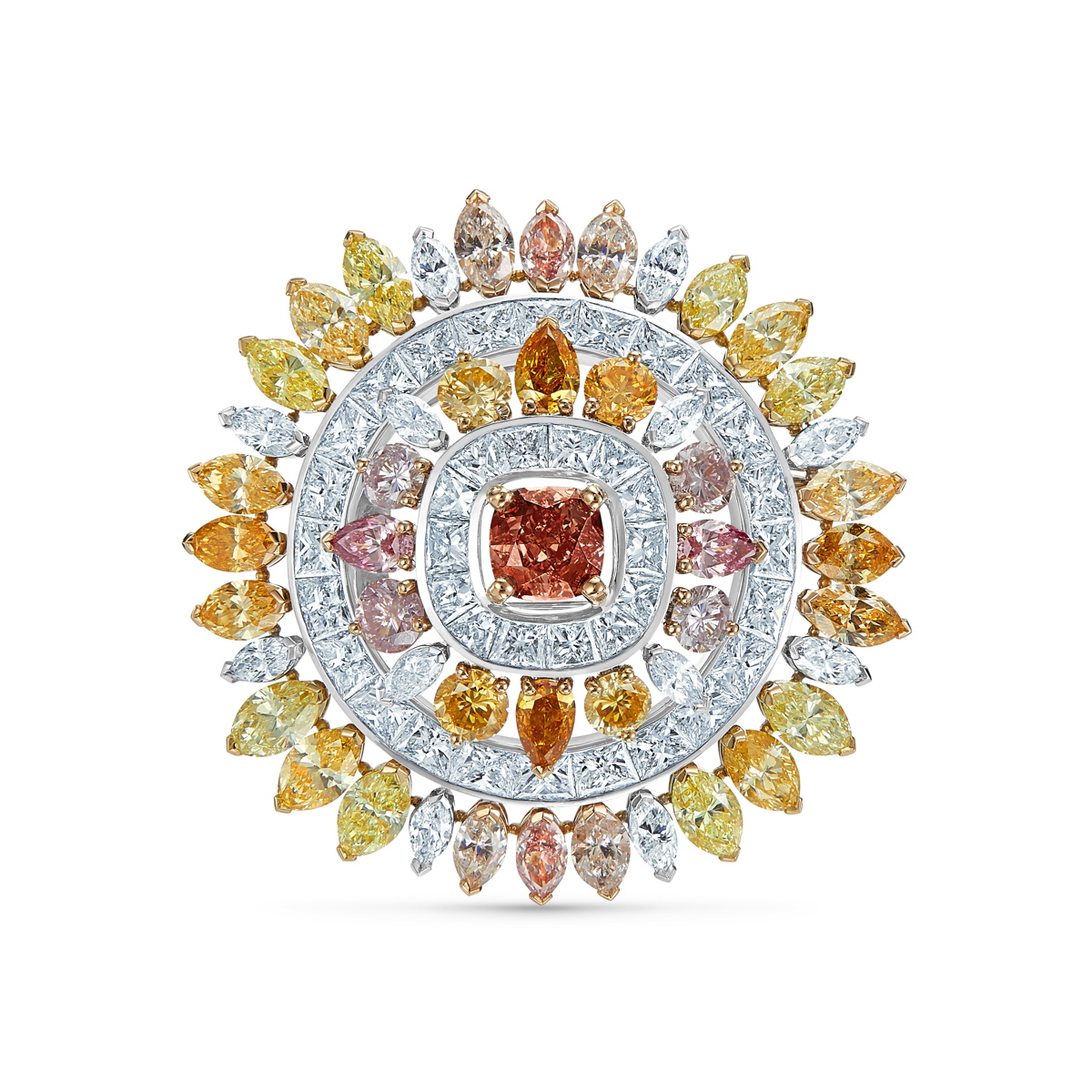
The Motlatse Marvel medallion. Photo: De Beers

The Namibian desert. Photo: De Beers
Again, the house uses the raw stones and blends them well in colourful, balanced and desirable pieces. If these pieces are no more spectacular than the previous ones, they testify to a know-how in the selection of stones and a desire to establish the De Beers style: a certain classicism but a timeless elegance for jewels that remain without ever making a mistake in taste. A fine tour de force at a time when jewellery performance is the order of the day, often with disappointing results.

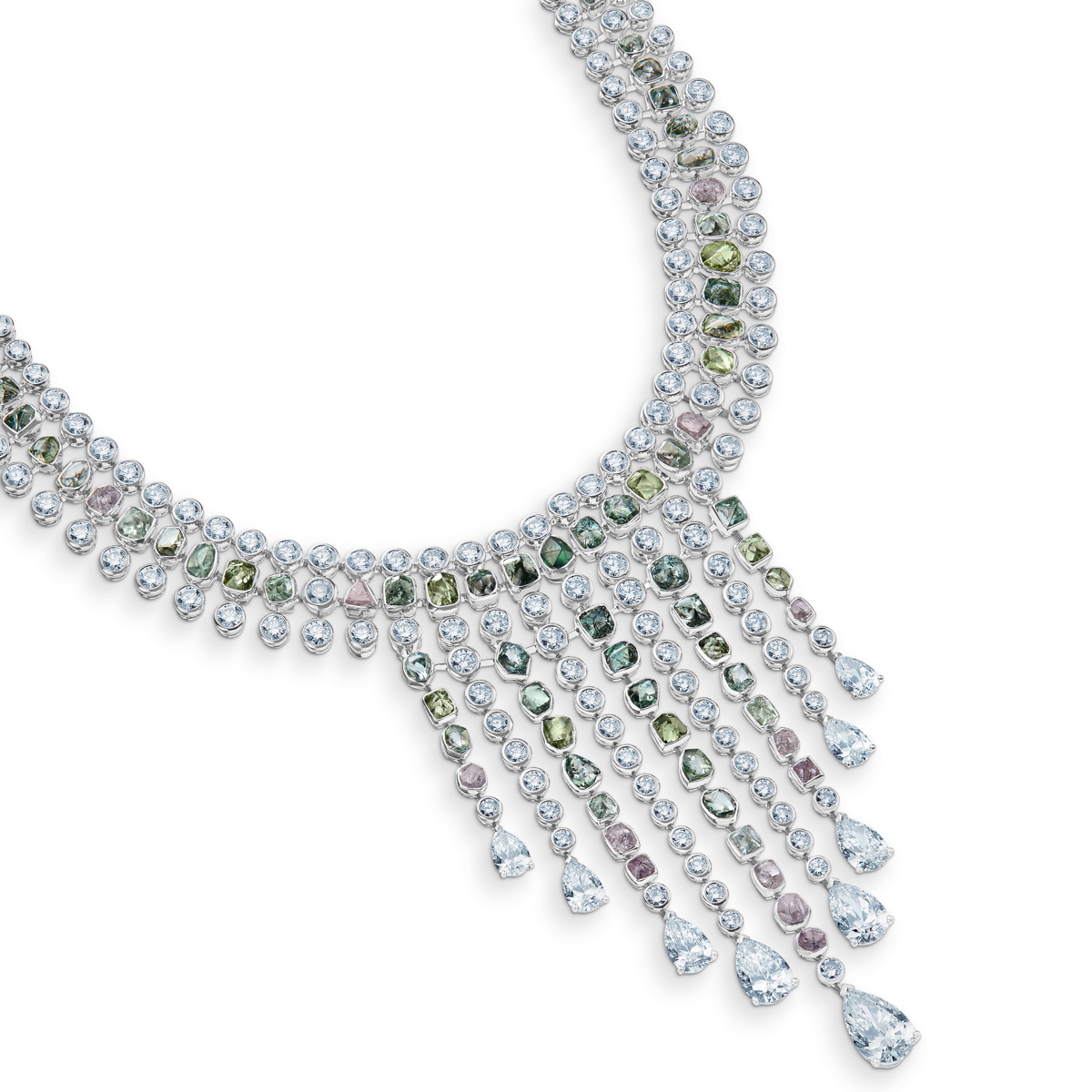
The Okavango Grace necklace. Photo: De Beers
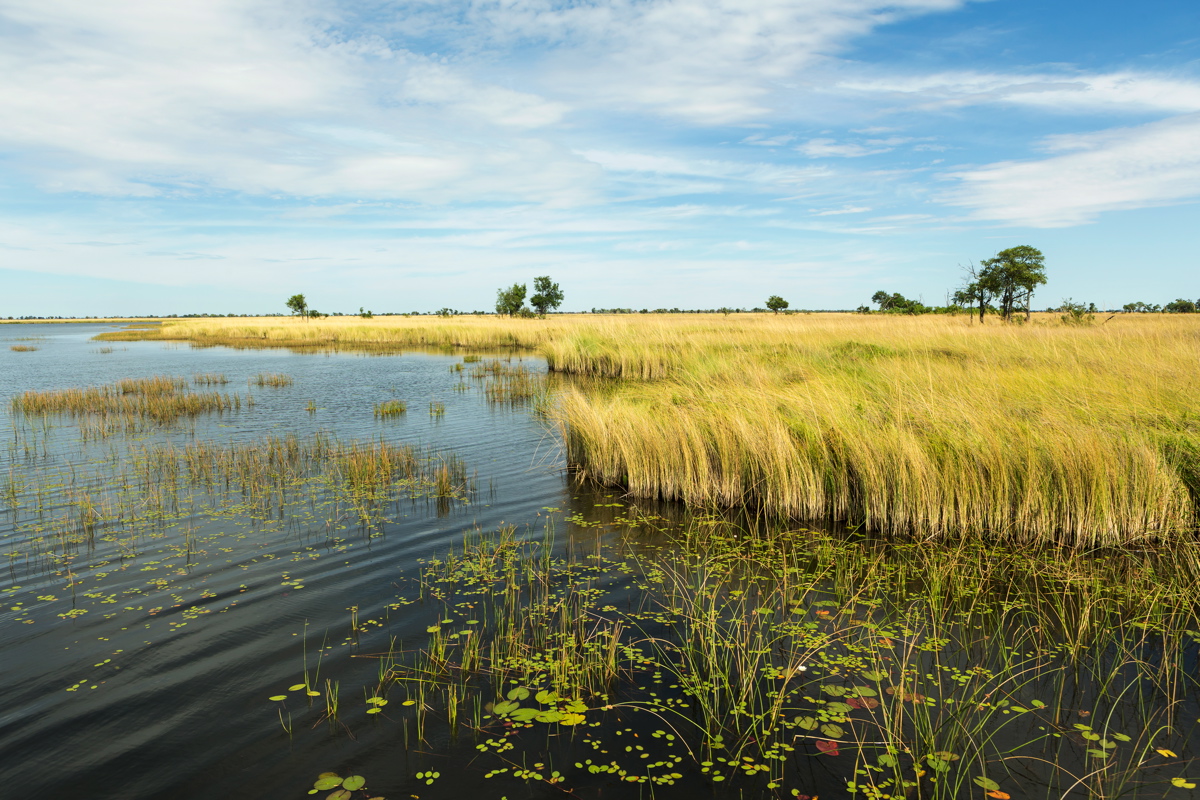
The Okavango Delta. Photo: De Beers
So let’s talk about the mines that produce a large part of De Beers stones. The subject of sourcing is important and is certainly the “hop point” of the years ahead. Never before has the word traceability been so widely used and claimed. De Beers is not perfect but it is making considerable efforts to improve its sourcing. Now all colourless stones between 0.2 and 3 carats are sourced from De Beers mines. The rest comes from other sources, all of them non-conflict, and the group has announced that it wants to guarantee the traceability of all its stones by 2030. If you want to look for information, you can find it. The group publishes the locations of its mines and the tax/management regime that characterises its mining locations. In Canada, for example, the company operates the Gacho Kué pipe and will be working to close and then rehabilitate the Snap Lake and Victor sites. In South Africa, De Beers mines are preparing to close: Venetia is due to close in 2021, while Voorspoed, which opened in 1906, will cease operations in the coming months. I can only invite you to read and explore the group’s website as you will find a lot of information there. Ask questions too! Yes, the diamond industry has a lot of work ahead of it to improve, but actions already exist. And it is necessary to welcome them. Of course, I’ll be looking at these rehabilitations to see if the announcements correspond to reality.
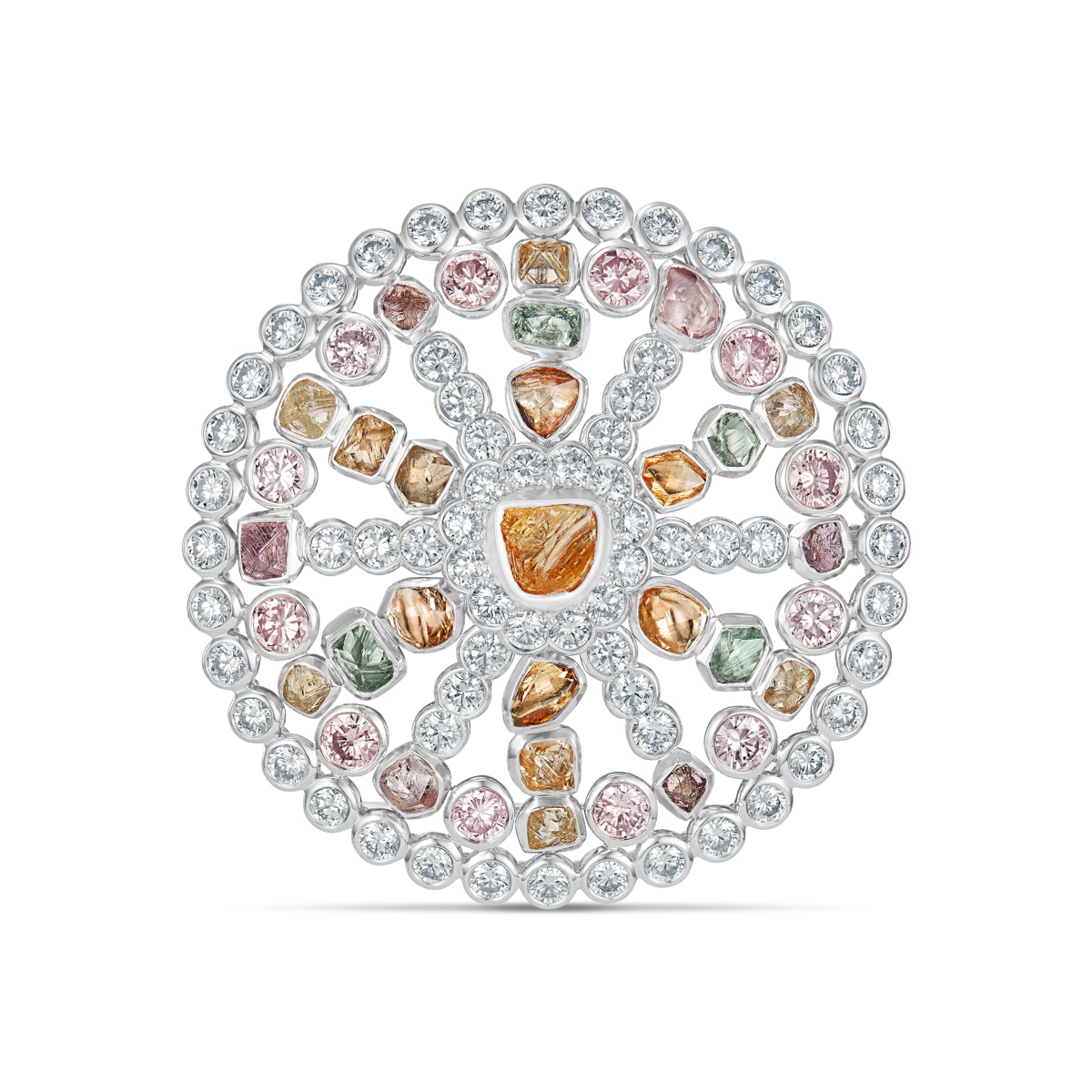
The Okavango Grace pendant. Photo: De Beers

The Okavango Grace ring. Photo: De Beers
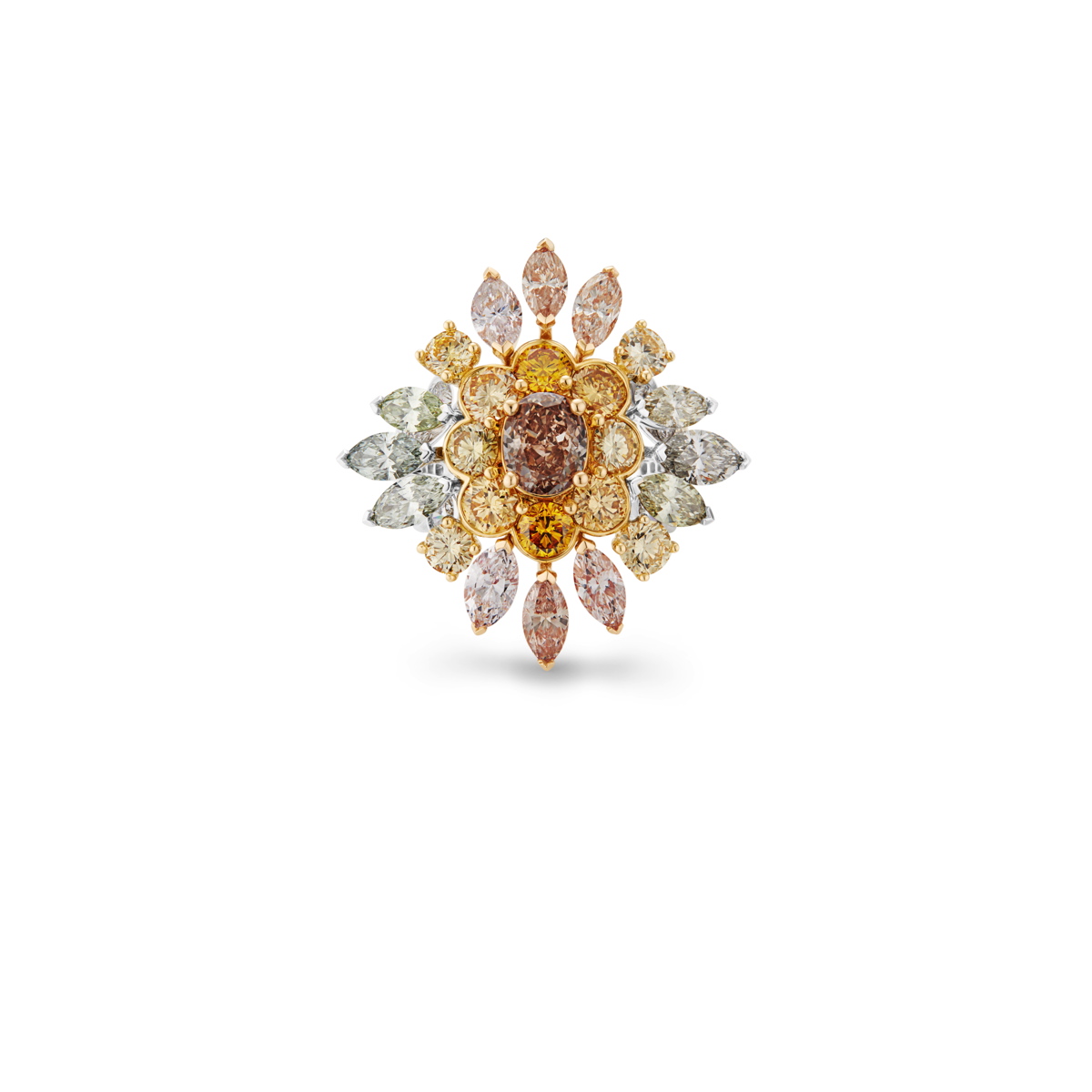
The Landers Radiance ring. Photo: De Beers
As far as nature is concerned, there is no doubt that diamond mining, like the mining of all raw materials, poses huge problems. The damage to the environment and to local populations is significant and widely visible. As for the restoration and rehabilitation of sites, this is sometimes non-existent and has been for many years. Another damage, and not the least, is that the location of a possible mining site sometimes requires the relocation of populations, villages or herds, sometimes large ones. This type of thing is now done less and less, but this type of practice has existed and continues to exist. While the new collection is a beautiful tribute to the nature that can be damaged by the mining industry, how is De Beers involved in this? In 2010, the group inaugurated The Diamond Route in South Africa, a 250,000 hectare area that develops tourism and ecological conservation. The site stretches from the far west of the country on the Namaqualand diamond coast next to the Namaqualand National Park, moving east to Kimberley, which includes the Kimberley Big Hole site, the Benfontein Reserve, dronfield Nature Reserve and Rooipoort Nature Reserve, and to Tswalu Kalahari Reserve, then to Brenthurst Gardens in Johannesburg, and Ezemvelo Nature Reserve near Pretoria, and finally to Venetia Limpopo Nature Reserve near Musina. For every hectare impacted by mining, the group protects six hectares from mineral exploration. Again, not everything is perfect – the Oppenheimer family has withdrawn from the project, for example – but this commitment allows for a less impactful mining industry. In 2018, the group invested 1.8 million euros to relocate 200 elephants to Mozambique. This population was too large for the Venetia Limpopo Nature Reserve. The animals were therefore moved to the Zinave National Park in Mozambique, which could accommodate and protect them.
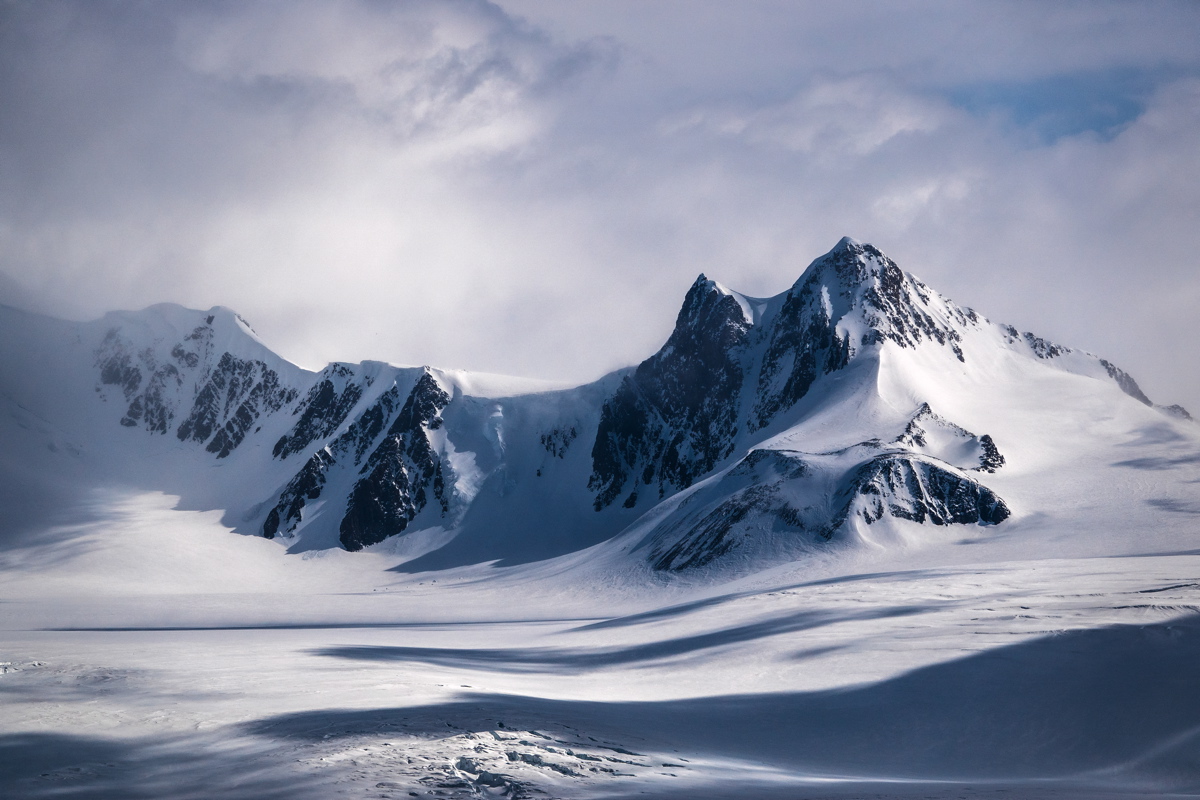
The Arctic Cordillera. Photo: De Beers
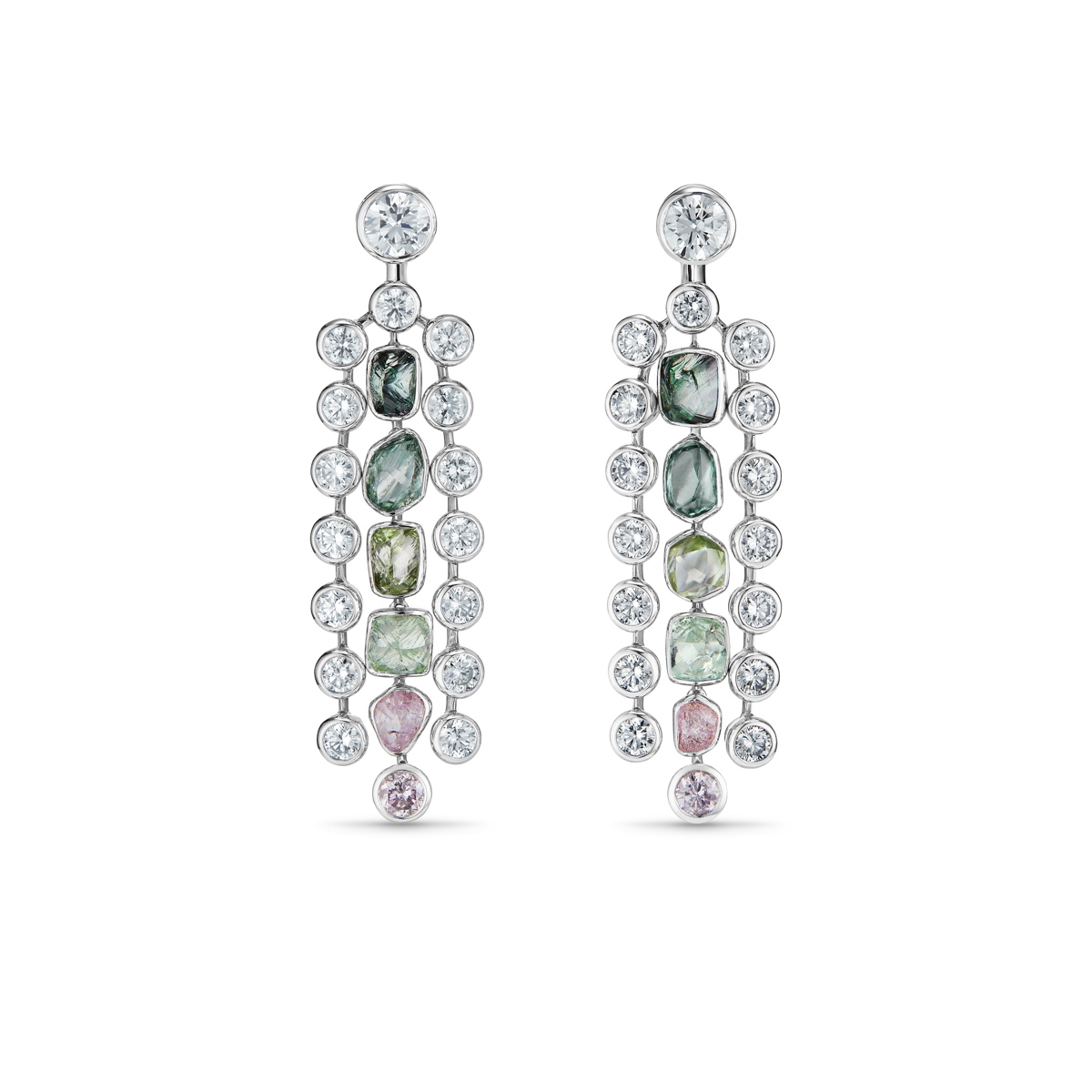
The Okavango Grace earrings. Photo: De Beers
The subject of protecting the environment, our resources and traceability in general is now an essential part of our industry. They are also integral to the marketing, and storytelling, that surrounds our business. By celebrating this beautiful nature, De Beers is also showing its first actions to make the jewellery sector less impactful. There is still a long way to go and a lot of work to be done, but also an awakening of consumer awareness. In the field of extraction in relation to jewellery, no other company has developed so many initiatives. I also found it interesting to look at the reality of the figures and the quantity/quality of the actions undertaken, which could be correlated with the purpose of this new collection, whose inspiration is resolutely nature and the landscapes of the diamond regions. Improving is now an obligation, encouraging positive actions is a necessity, but above all we must raise awareness so that consumers are increasingly informed and committed in their personal acquisition processes, whether they concern jewellery or, on the contrary, unique and exceptional pieces.

The Landers Radiance ring. Photo: De Beers
See you soon!






